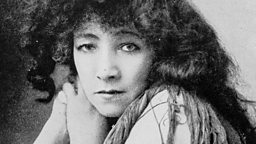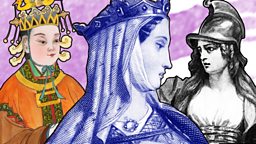Ten heroic facts about the incredible Harriet Tubman
Harriet Tubman is an American Hero. After escaping slavery in 1849, she returned to the South no less than 13 times to free her family and other enslaved people. What else is there to know about Harriet Tubman? Well, quite a bit actually.
In the You’re Dead to Me podcast, Greg Jenner is joined by historian Dr Michell Chresfield and comedian Desiree Burch to discuss her life and legacy...

How did Harriet Tubman escape slavery?
A clip from You're Dead To Me.
1. Harriet Tubman was born on a plantation in Maryland
Born around 1820 to 1825, her birth name was Araminta Ross and her nickname was “Minty”.
2. Tubman was seriously injured at the age of 12
A plantation overseer threw an iron weight at an enslaved person but Harriet stepped into the path and the weight crushed her skull. This trauma left Harriet with lasting health problems including severe headaches and narcolepsy.
3. She followed the North Star to freedom
I looked at my hands to see if I was the same person now that I was free. There was such glory over everything, the sun came up like gold through the trees, and over the fields, and I felt like I was in heaven.Harriet Tubman
Tubman travelled 90 miles north in incredibly dangerous conditions to Pennsylvania using “Underground Railroad” networks and following the North Star by night. Describing crossing the border to Pennsylvania, she said: “I looked at my hands to see if I was the same person now that I was free. There was such glory over everything, the sun came up like gold through the trees, and over the fields, and I felt like I was in heaven”.
4. The Underground Railroad was neither underground nor a railroad
The Underground Railroad was a network of safe houses, water networks, boat captains, and wagon drivers. Coordinators of the Underground Railroad were known as “conductors” and people who used the Underground Railroad to escape slavery were called “passengers”.
5. Tubman was nicknamed “Black Moses”
Despite finding work as a free woman, Tubman travelled back to the South at least 13 times to free more enslaved people. This earned her the nickname “Black Moses”. As a conductor on the Underground Railroad it is estimated that Tubman freed around 70 enslaved people.

6. Harriet Tubman was a nurse during the American Civil War
Tubman’s excellent knowledge of flora in Maryland meant she was able to successfully treat dysentery which, at the time, killed thousands of soldiers.
7. She was the first woman in US history to plan and lead a military raid
Tubman was a valuable military asset for the Union Army during The American Civil War. She went behind enemy lines to lay the foundations for a plantation raid along the Combahee River. It is estimated that roughly 700 enslaved people were freed in South Carolina as a result of this attack.

8. Tubman bit down on a bullet during brain surgery
Harriet’s childhood head injury continued to cause her pain throughout her life. To address what she described as “buzzing” in her head, she underwent brain surgery in the late 1890s. Instead of accepting anaesthesia, she reportedly chewed a bullet during her surgery after seeing soldiers do this during amputations.
9. Harriet was an outspoken champion of women’s suffrage
She worked alongside many other activists including Susan B. Anthony and Emily Howland.
10. Harriet Tubman died on 10 March, 1913 at the Harriet Tubman Home for the Aged
Tubman’s last words were, “I go away to prepare a place for you”. She was buried with military honours in Fort Hill Cemetery in New York.



































